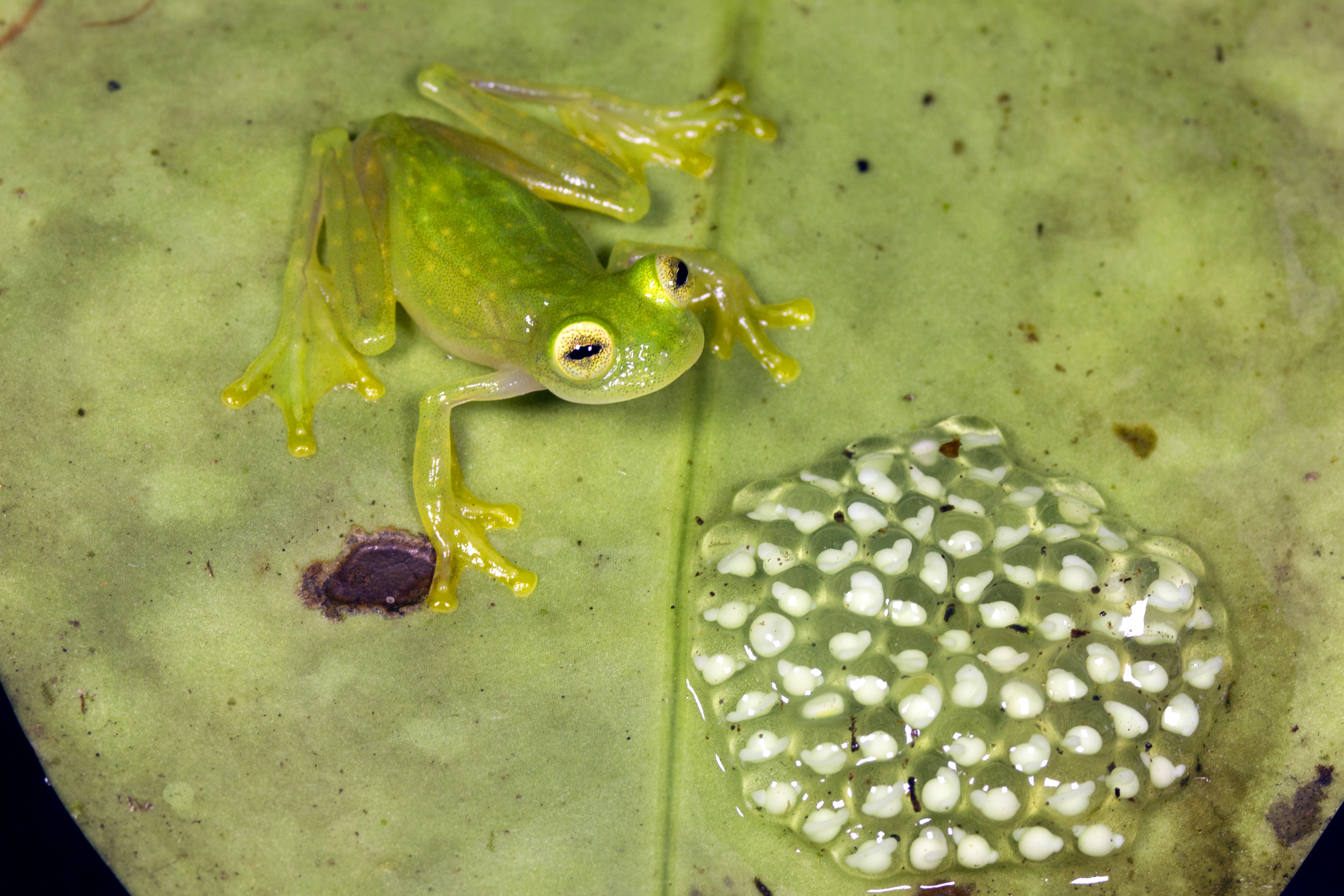Glass frog is a tiny, delicate frog with large, forward-facing eyes and a transparent underside, from which it gets its name. In some glass frogs, the internal (inside) organs may be visible through the skin. This odd characteristic may help the frogs blend in with their surroundings and hide from predators.

There are more than 100 species (kinds) of glass frogs. Most species are a shade of green. Some species have green bones, and some even lay green eggs. A glass frog has webbing on its hands and feet. It also has sticky pads called adhesive disks on its toes, which help the frog climb. Most glass frogs are about 1 inch (2.5 centimeters) in length. But one species measures more than 3 inches (7.6 centimeters).
Glass frogs live in tropical forests in southern Mexico and Central and South America. They are most diverse in the Andes Mountains of Colombia and Ecuador. Glass frogs are found mostly on plants and rocks overhanging streams. They are active mainly at night. Glass frogs eat mainly insects.
Most female glass frogs lay their small, jellylike egg masses on leaves overhanging fast-moving streams. The eggs are often preyed upon by certain flies, which lay their own eggs on the frog eggs. The frog eggs become food for the hatched insect larvae (young). In a few species of glass frogs, males watch over the eggs until they hatch. This habit may prevent predation by flies and other animals. It also may prevent the eggs from drying out. After hatching, the tadpoles fall or are washed off into the stream below. Males are territorial and engage in wrestling matches with trespassers, competing for control of prime mate-calling and egg-laying sites.
